The International Review of Economic Education (IREE) incorporating Computers in Higher Education Economics Reviews (CHEER) is dedicated to enhancing learning and teaching in the Higher Education Economics Community. The peer-reviewed journal is an open access resource, available electronically on the Economics Network's web site.
IREE has 274 paper subscribers and over 326000 (2009/10) successful webpage accesses per year. IREE attracts academic contributors from all over the world including the USA, Australia, East Asia and Europe. Readership of the journal is also international with the following table showing the top percentage of hits by country:
|
|
Country/Territory
|
%
|
|
1
|
United States
|
24.57
|
|
2
|
United Kingdom
|
16.31
|
|
3
|
Australia
|
4.44
|
|
4
|
India
|
3.84
|
|
5
|
Germany
|
3.72
|
|
6
|
Philippines
|
3.47
|
|
7
|
Canada
|
2.30
|
|
8
|
Czech Republic
|
2.16
|
|
9
|
Malaysia
|
1.95
|
|
10
|
Indonesia
|
1.57
|
(note this is not the total number of hits for IREE articles)
The IREE article with the most citations (using Goodle Scholar) is Elliot’s (2003) ‘Using a personal response system in Economics teaching’. Other articles with high citation rates are Roberts (2008) ‘The soulful science: what Economists do and why it really matters’ and Reinman (2004) ‘First year teaching learning environments in Economics’.
The most popular IREE article in 2009/10 was Macdonald (1995) ‘Teaching linear programming using Micrsoft Excel Solver’ averaging over 3700 hits a month with IREE receiving over 35000 hits per month.
Mixon and Upadhya (2008) published a paper analysing the impact of three pedagogic journals in the area of economics. The citation-based appraisal uses the Journal of Economic Education (JEE, a prestigious US-based journal running for thirty years), the 21st century Journal of Economics and Finance Education (JEFE) and the Economics Network’s International Review of Economics Education (IREE). The paper found that IREE had a similar citation impact as JEE and ‘both the JEE and the IREE have had a significantly greater impact than the JEFE’.
Of particular interest from the Mixon and Upadhyaya (2008) paper is the following paragraph:
‘In order to discover why the IREE has been able to make inroads to a much greater degree than the JEFE, we examined the list of authors across the articles in the cohort. These three lists are compared to the two rankings of economists in Lo, Wong and Mixon (2008). The Lo et al. (2008) study provides two separate rankings of economists, each based solely on a measure of the impact of their economics education (teaching-focused) research, the mission of the three journals examined in the instant study.
Other comments on IREE have included:
“The IREE articles have helped me change the content of the macroeconomics module which I teach.” (Lecturer, Lecturers’ survey 2009)
“I tried out my first 'new' material on my first year EBG102: ICT & Study Skills for Business and Economics module last Friday, using an idea that I'd originally come across in a paper … in the latest issue of the International Review of Economics Education”. (Lecturer, Case study November 2007)
“As I go through the challenging experience of teaching intermediate microeconomics for the first time, I keep looking for good ideas on how to improve students’ learning and motivation. Today, I found a very inspiring article in the International Review of Economics Education …IREE Volume 6 Issue 1, 2007.” (Finnish Lecturer on blog http://endogenouspreferences.wordpress.com/2008/02/13/internationalising-intermediate-microeconomics/, February 2008)

